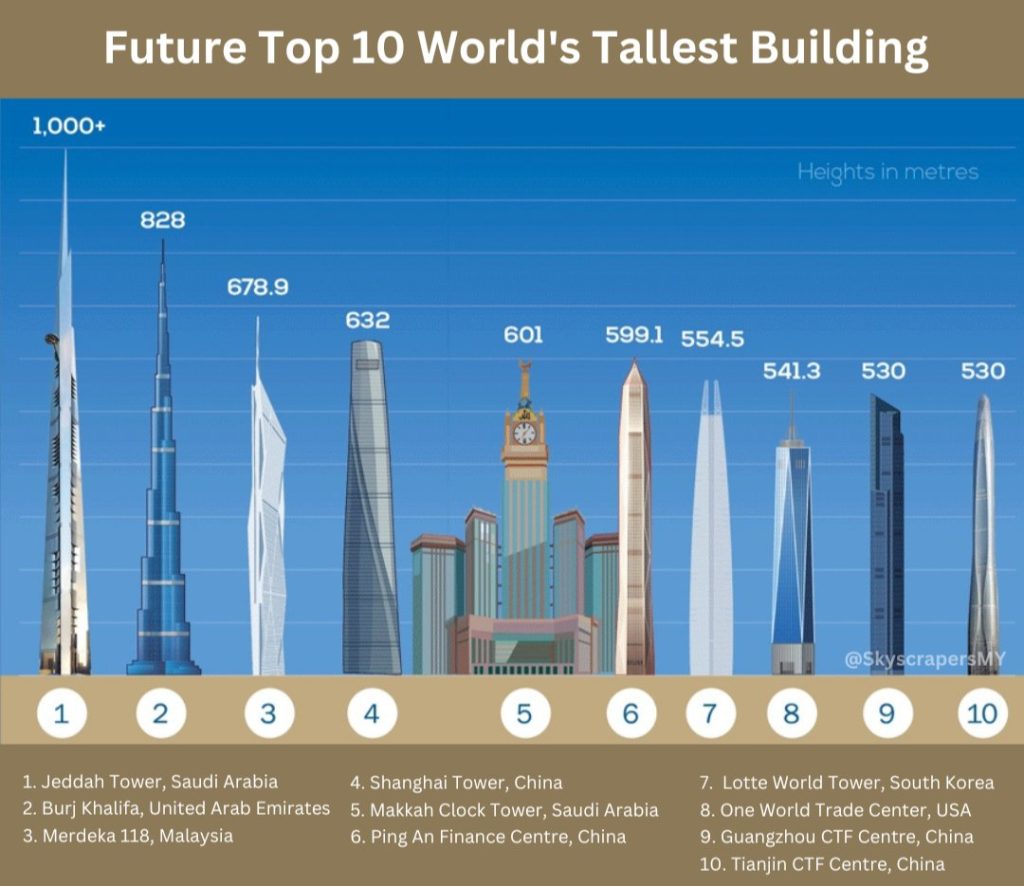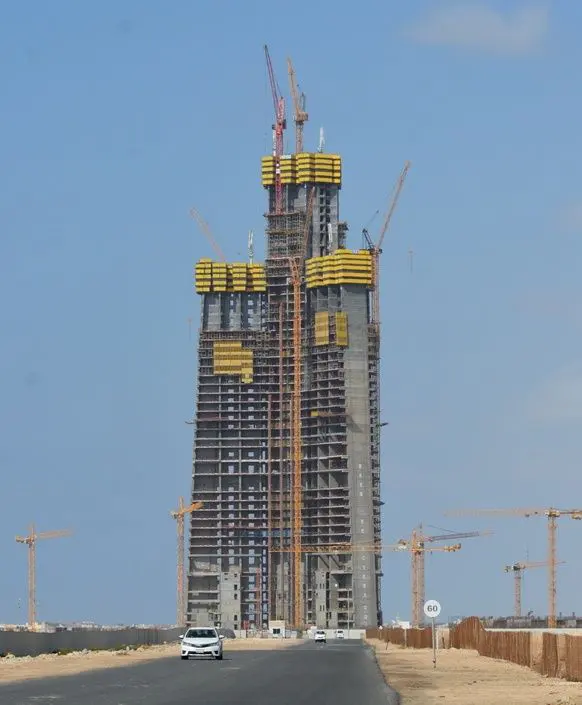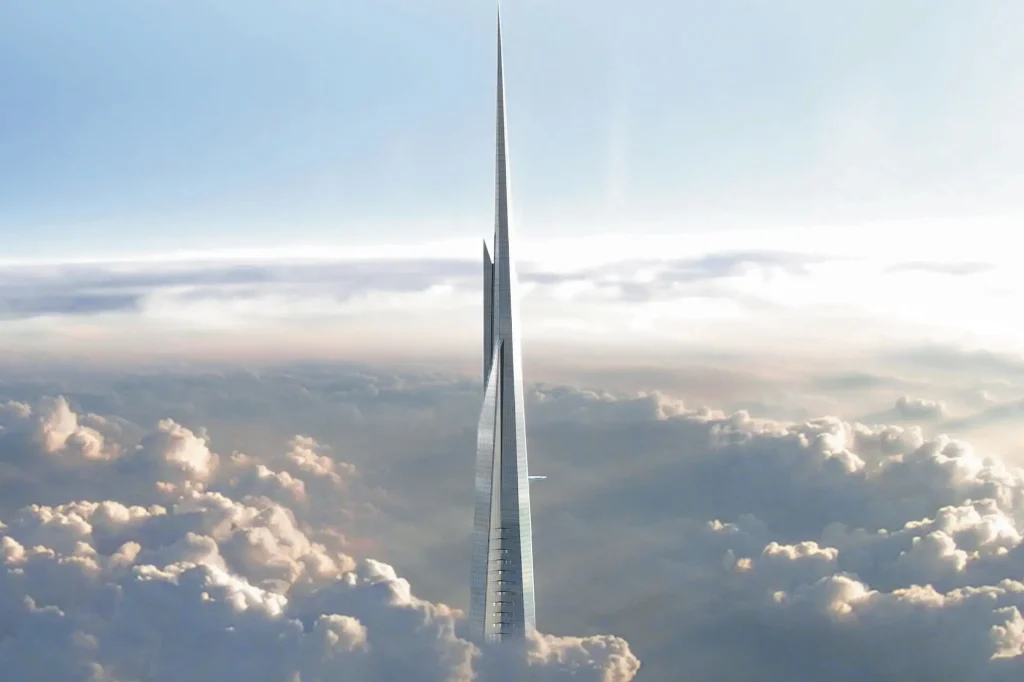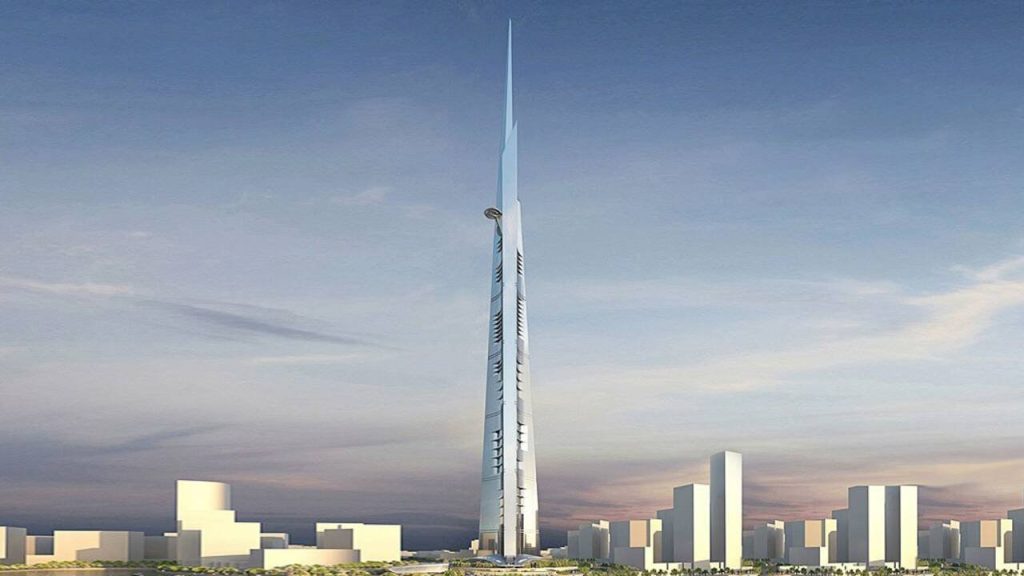Introduction
Jeddah Tower, previously known as the Kingdom Tower, is an ambitious project that aims to redefine the skyline of Jeddah and the entire Kingdom of Saudi Arabia. When completed, it will not only be the tallest building in Saudi Arabia but also the tallest in the world, surpassing the iconic Burj Khalifa. With its futuristic design and innovative engineering, Jeddah Tower represents a significant leap into the future of architecture, making it a beacon of progress and a symbol of the Kingdom’s aspirations.
Jeddah Tower, also known as Burj Jeddah and formerly referred to as Kingdom Tower, is an ambitious skyscraper project located in Jeddah, Saudi Arabia. This remarkable structure aims to achieve a height of 1 kilometer (approximately 3,281 feet), making it the first building in the world to reach such an impressive height. Once completed, it is expected to surpass the Burj Khalifa by a substantial margin of 180 meters (about 590 feet), solidifying its status as the tallest building in the world.
The project is owned by Kingdom Holding Company, with construction having commenced on April 1, 2013. The visionary architects behind this stunning design are Adrian Smith and Gordon Gill, who work under their architecture firm, Adrian Smith + Gordon Gill Architecture. The architectural style of Jeddah Tower is classified as neo-futurism, reflecting a modern and innovative approach to building design.

The estimated cost for this groundbreaking project is around SR4.45 billion (approximately US$1.23 billion), showcasing the ambitious nature of this endeavor. As Jeddah Tower rises, it not only represents a significant engineering feat but also symbolizes Saudi Arabia’s aspirations for the future, positioning Jeddah as a key player in global architecture and tourism.
A Vision of the Future
The concept behind Jeddah Tower is rooted in a desire to showcase the Kingdom’s commitment to innovation and modernization. The goal is to create a landmark that reflects Saudi Arabia’s rich heritage while also embracing contemporary design principles. The tower is envisioned to be a mixed-use development, featuring residential units, offices, a luxury hotel, and various recreational facilities.
Historical Background
The initial plans for Jeddah Tower were announced in 2008, and the construction officially commenced in 2011. However, the project has faced several challenges, including economic fluctuations and construction delays. Despite these setbacks, the determination to see this architectural marvel come to fruition has only grown stronger among the stakeholders.
Architectural Design
Jeddah Tower’s design is a masterpiece crafted by renowned architect Adrian Smith, who is known for his work on some of the tallest buildings in the world. The tower stands at an impressive 1,000 meters (3,281 feet) and features a unique spiraling design that mimics the shape of a flower. The sleek glass facade not only enhances its aesthetic appeal but also reflects the surrounding environment.
Engineering Marvels
The construction of Jeddah Tower involves groundbreaking engineering techniques and innovative technologies. The structure will utilize a reinforced concrete core, which provides exceptional stability against wind forces and earthquakes. Moreover, advanced elevators will ensure that accessing the upper floors is efficient and convenient for residents and visitors alike.

Sustainable Practices
As part of the Kingdom’s commitment to sustainability, Jeddah Tower incorporates eco-friendly design elements. The building will feature energy-efficient systems, including solar panels and advanced water recycling facilities. These initiatives aim to reduce the overall environmental impact while promoting a sustainable lifestyle within the urban setting.
The Economic Impact
The development of Jeddah Tower is expected to significantly boost the local economy. It will create thousands of job opportunities during and after construction, contributing to the growth of various sectors such as real estate, tourism, and hospitality. Furthermore, the tower is projected to attract international investors, establishing Jeddah as a global business hub.
Cultural Significance
Jeddah Tower stands as a symbol of modernity and progress, aligning with Saudi Arabia’s Vision 2030 initiative. This national blueprint aims to diversify the economy and promote tourism, making the tower a key player in transforming the Kingdom’s image on the global stage. The tower is not just a building; it represents the aspirations and dreams of a nation.
Future Developments in the Area
The surrounding area of Jeddah Tower is set to undergo a major transformation, with several infrastructure projects planned to enhance accessibility and connectivity. The tower will be the centerpiece of the Jeddah Economic City, which will feature commercial spaces, residential complexes, and public amenities, further enriching the urban landscape.
Visitor Experience
Once completed, Jeddah Tower will offer an unparalleled visitor experience. The observation deck, positioned at an astounding height, will provide breathtaking views of the city and the Red Sea. Various amenities, including fine dining options and retail spaces, will ensure that visitors have a memorable time while exploring the tower.
Global Comparisons
In a world where skyscrapers are increasingly becoming symbols of economic power, Jeddah Tower stands out not just for its height but also for its innovative design and functionality. While it will surpass the Burj Khalifa, it aims to offer more than just a record-breaking height; it embodies a new era of architectural design that prioritizes sustainability and human experience.
Jeddah Tower in Popular Media
The grandeur of Jeddah Tower has not gone unnoticed in popular media. Documentaries and news features highlight its construction journey, while its striking design has made it a subject of fascination for many. Public perception continues to evolve as anticipation builds for its completion, making it a landmark that promises to be immortalized in art and culture.
Challenges and Controversies
Despite its promising future, the project has faced its share of controversies, particularly regarding delays and budget overruns. Public debates have arisen over the feasibility of such a grand project in the current economic climate. However, supporters argue that the long-term benefits will far outweigh these temporary setbacks.
The Future of Skyscrapers

As architectural trends continue to evolve, Jeddah Tower is poised to set new standards in skyscraper design. Its combination of height, functionality, and sustainability may inspire future projects around the globe, paving the way for a new generation of innovative urban structures.
Conclusion
In summary, Jeddah Tower is more than just a tall building; it is a testament to Saudi Arabia’s vision for the future. With its groundbreaking design and engineering feats, it aims to redefine urban living and contribute to the Kingdom’s economic growth. As we look forward to its completion, Jeddah Tower will undoubtedly become a significant landmark in both Saudi Arabia and the world.


